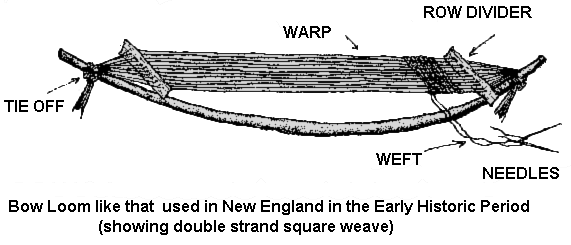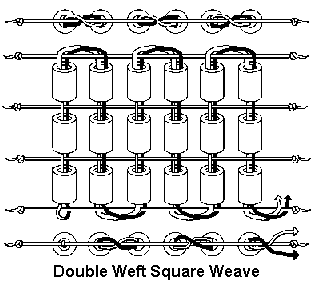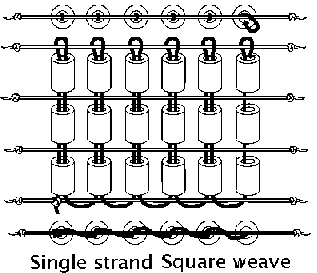Informative
Beadwork and Bead Looms – A Brief History
Follow us on
Ever wondered who came up with the idea of beadwork or a loom?
I have, as I am often thankful for those who have created this art form, and crafted the first looms. I am also grateful for those who have gone before us, sharing their knowledge, skill, and creations.
So here in this blog, only a brief and generalized history is offered. I hope that this brief introduction will introduce you to the rich history of bead loom weaving that has helped us shape our bead loom weaving today.
History of Beadwork
Beadwork is one of the best-known art forms practiced by Native American Indians.
Before Europeans arrived in North America, native populations created their beads using tools made of stone or wood and abrasives such as sand. At first, beads were relatively large and meant to be worn strung on necklaces or thongs.
Beads were the earliest goods that Europeans traded with Native Americans.
The availability of small, brightly colored beads made possible the creation of original and brightly colored designs from a broader color palette.
This created an explosion of beadwork in North America and during the mid-1800s beads were readily available.
Beadwork was used as a decorative art form that decorated clothes, horse gear, utensils, and dwellings.
The Loomwork Beading Technique
Loomwork has been used for a long time as there are records of wampum belts from the 1600s right through to the 1800s! Loom-beading is not an adaptation of European techniques or other cultures. It is a native invention. As soon as seed beads were made available to native women, they invented 2 beadwork techniques, bead applique embroidery, and loomwork.
![Seneca Iroquois Wampum 1670-1687 Single weft square weave[hayes 1985]](https://beadingtreasures.com/wp-content/uploads/2022/11/img00010.gif)
Loomwork shares many techniques or technical traits with woven cloth or mats. It is assumed that these techniques have developed and evolved together.
The basic elements of loomwork are thread and beads.
The thread or string was made from twisted sinew, or hide thong. The twisted cord from plants, bark, and roots was also used.
Even though European threads were available alongside beads during the early contacts with Europeans, Natives used their strings which were thought to be of superior quality and strength.

This ingenious loom was made up of a curved stick, much like an archer’s bow, providing the tension needed to keep the warps taught. The warps were kept evenly spaced with a warp divider, with every warp string threaded through and tied off at the opposite end.
This loom later evolved into a simple rectangular wooden frame tied together at the 4 corners. Then eventually, it was modified into the modern version used today, such as the Ojibwa Bead Loom.
There were two main loomwork weaves used, the Double Weft Square Weave and the Single Strand Weave.
Both of these methods are used in loomwork today.
Double Weft Square Weave

We know this as the “2 needle method” today. It involves 2 weft threads traveling together in one row. Beads are loaded into one weft and passed through the back, while the second weft passes through the front, locking each bead in between the warps. The weft threads are then alternated and the same procedure happens again with the next row, but starting on the opposite side. This requires the weaver to be adept at weaving the beads back in with their non-dominant hand!
Single Strand Weave
Another name for the loom work technique is “Single-strand square weave”. So-called because a single weft is used to pass through the beads at a time, using only one needle. This is the most widely used method today. This probably developed in the late 1600s and early 1700s with the budding of the Native wampum industry.

A Final Note…
I am pleased to inform you that, unlike many art forms that have been lost to the tides of time, this native art form is still in existence, and remains strong!
Along the shores of Lake Huron, Lake Superior, and northern portions of Lake Michigan, the Woodland Ojibwa people have kept their rich beadwork tradition. For example, bead weaving on a simple wooden loom is an art that has been practiced by the Ojibwa for many years.
I realize I can never do justice to the history of such a rich and beautiful art form. However, it’s always helpful to know a bit about the history and origin of things.
I’m always reminded and thankful for all the creative cultures and artists that show us the way to new art forms and creative channels. This is specifically bead tapestry weaving in this case.
I’m also glad that we live in a day and age where there are more than 2000 Delica bead colors in our palette that we can design and create from.
References
Native American Technology and Art
Native American Beadwork | Traditional Beading History, Patterns & Styles
Bead Looms – History and Usage
If you enjoyed this post…
You might also like to read these posts too:
lATEST POSTS
Best Thread Color to Use with your Patterns
What is the best thread and thread color to use for weaving your bead tapestry?
Dec
Best Way to Weigh Your Beads
How best to go about weighing the beads in your stash before purchasing more for[...]
Dec
How BT is Helping You to Weave Large Bead Loom Tapestries
All things beading, bead looming large tapestries and digital planning for beaders.
Mar
Hi there! I’m Nedal.
I created Beading Treasures to make information about beading large tapestries more accessible, and in doing so encouraging creating of this amazing art form.
Weaving big can seem intimidating but by using some techniques it is totally doable, no more than that it is really enjoyable!
If you’ve found this blog helpful, please support me by choosing the affiliate products on my blog and following me on my social platforms.
Don’t forget to check out the shop.
Thank you!
Nedal Douaihy, Artist & Founder









